School History: Forestville Elementary School (1922-1953)
Between 1907 and 1915, Fairfax County Public Schools (FCPS) established its first high schools for white children in communities such as Clifton, Falls Church, Floris, Herndon, McLean, and Oakton. In 1916, citizens of Forestville, eager to provide their children with access to higher education, convinced the School Trustees of Dranesville District to open a high school in their community. It was agreed that the new building would be large enough to house both high school and elementary school classes, and that the Forestville community would be responsible for excavating the site and constructing the foundation of the building. On July 21, 1916, the School Trustees purchased two acres of land from the Oliver family in the village of Forestville for $600. The two-acre lot was bounded on the north by Walker Road and on the south by Georgetown Pike.
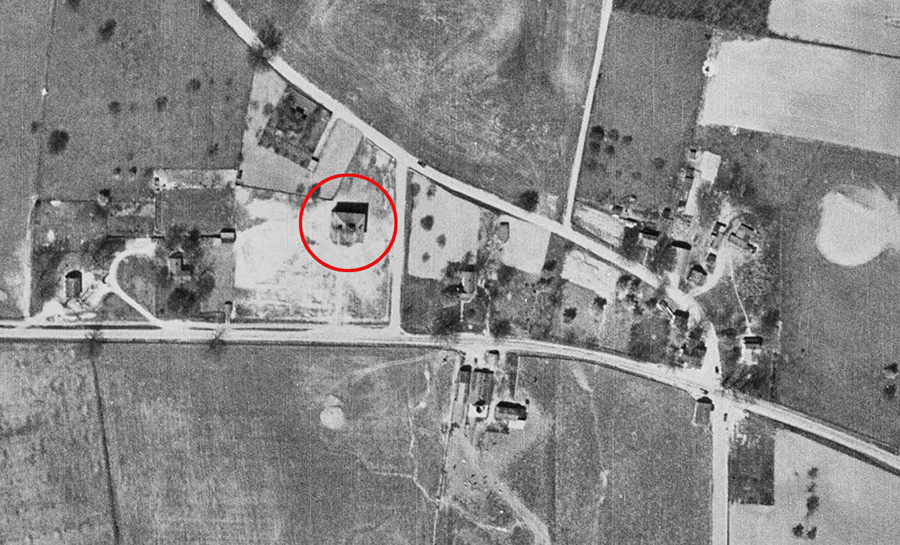
Even though the site for the school was purchased in 1916, it would be several more years before enough funding became available to begin its construction. In 1920 and 1921, the School Trustees applied for loans from the State Literary Fund, and Forestville residents held fundraising carnivals and rallies. In March 1922, Chester L. Smith of Oakton was awarded the contract to build the school at a cost of $19,219.
The high school at Forestville which will include two years of high school work is expected to open immediately. A number of pupils in these grades are out of school, while others are attending at McLean… The primary grades, under the supervision of Miss Hope Fleming, are carried on in the old building.
~ The Fairfax Herald, October 13, 1922
On October 19, 1922, a group of concerned parents from Forestville spoke at a meeting of the newly consolidated Fairfax County School Board and described several serious defects in the construction of the building. A committee was formed to investigate the matter in conjunction with the State Architect, and work continued on the school into the winter months.
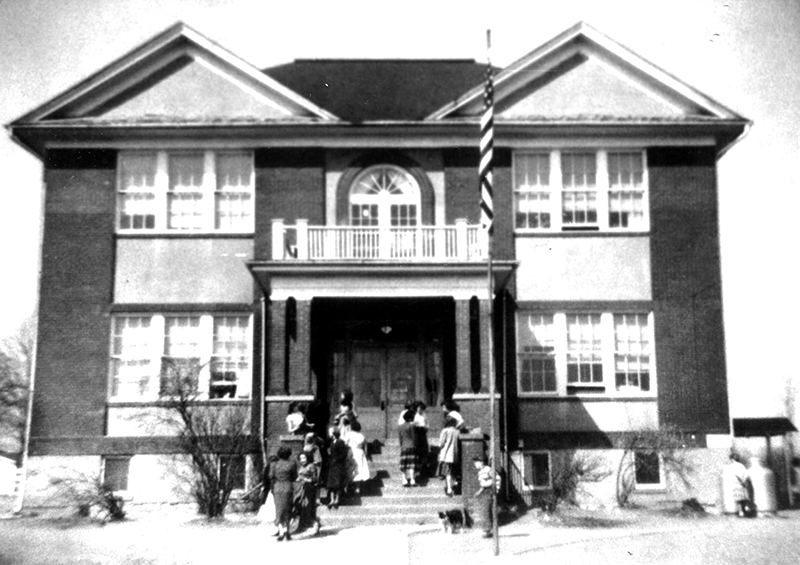
It is believed a portion of the building opened for high school students before the end of the 1922-23 school year, however records are unclear if elementary students were housed there prior to September 1923. On July 30, 1923, a committee that had been appointed to conduct a final inspection of the building reported to the School Board that some things were not yet up to standard, but on the whole the building was ready for occupancy. While many photographs depicting the exterior of the Forestville School have survived, photographs of the interior of the building are exceedingly rare. Milburn Sanders described the interior in an article published in The Great Falls Gazette.
A wide entrance hall ran the full depth of the building to a rear porch. Two classrooms were located on each side of the hall. Upstairs there were two more classrooms to the rear and an auditorium ran across the front of the building. The school was capped by a bell, which was sheltered by its own roof. The bell was rung by pulling a rope just outside the entrance to the auditorium. Horse-drawn covered wagons provided the earliest transportation to and from school. Homer Presgrave and Clyde Wenzel were drivers. The first motorized bus was a Model T Ford driven by Theodore Utterback.
~ Excerpt from Milburn Sanders’ article “Gone, Forever, the Little Red Schoolhouse” published in The Great Falls Gazette, September 12, 1979.
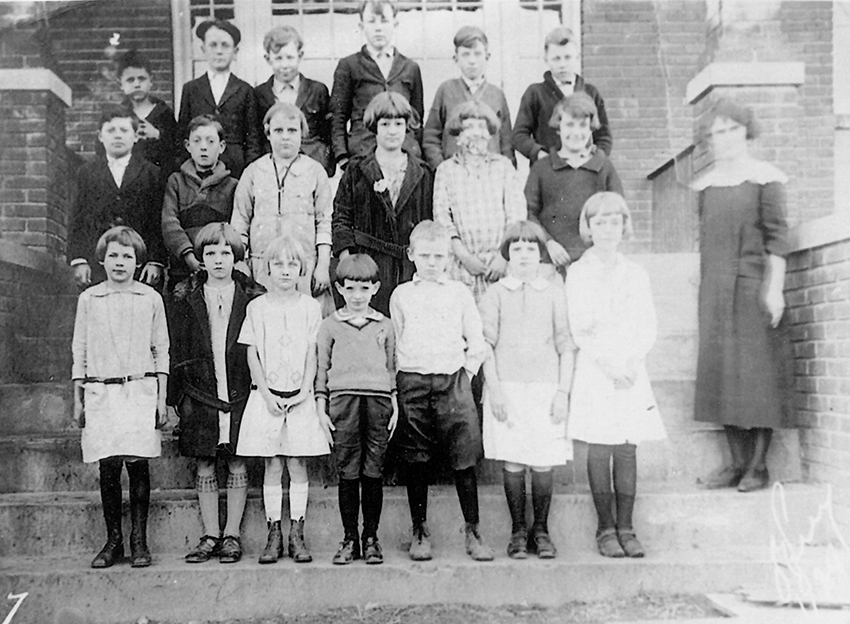
Higher Education
The new school at Forestville was referred to as the Forestville High School and Forestville Junior High School in records, but the building also housed children in the elementary grades. The first known principal of the school was Frederick Bruce Cunningham. In his Principal Term Report for 1925-26, Mr. Cunningham indicated that the Forestville School had six teachers, including himself, and that 24 students were enrolled in its high school program. At this point in time, high school in FCPS consisted of grades 8-11. Junior high schools typically offered only grades 8-9, but, by 1927-28, tenth grade education was also being offered at Forestville. During that school year, there were 188 children enrolled in the school, 45 of whom were in the high school grades.
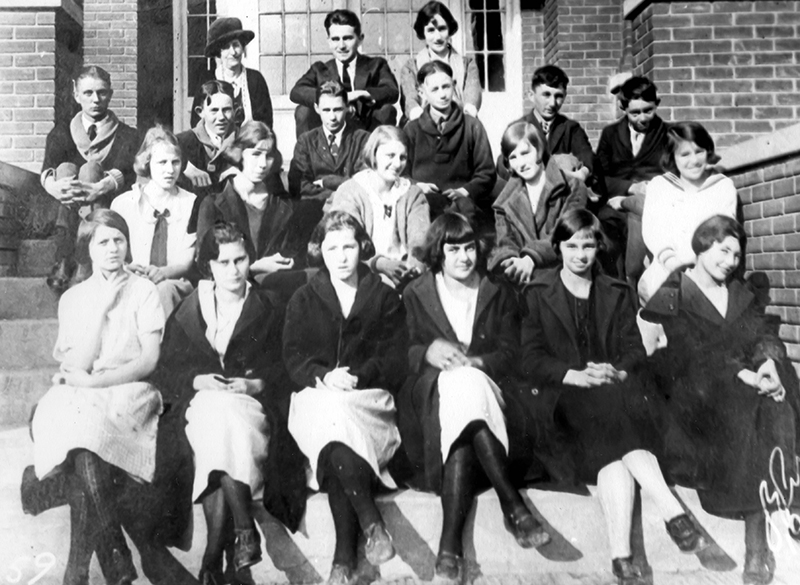
Did You Know?
In 1927, the average monthly salary for a teacher at the Forestville School was $85. The principal earned $140 per month.
Forestville Elementary School
On June 5, 1930, the Fairfax County School Board voted to close the high school department at Forestville and transport the students to Herndon High School at the beginning of the 1930-31 school year. By consolidating the high school program at Herndon, FCPS was able to offer a broader range of academic subjects and vocational courses in agriculture, home economics, and business.
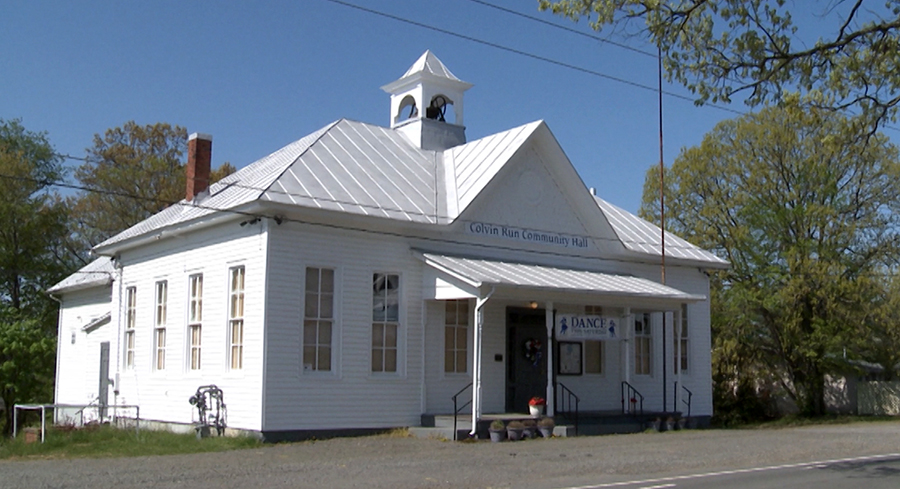
Forestville Elementary School, as the school in Forestville became known, opened in September 1930 with six teachers: Ruth N. Smith (Grade 1), Blanche B. Cornwell (Grade 2), Helen Quigg (Grade 3), Dora K. Cox (Grade 4), Margaret Jeffries (Grade 5), and Edith Rogers (Grades 6-7). Ms. Rogers also served as the principal. In December 1930, the School Board authorized the installation of electrical wiring, lighting, and a Delco-Light electric plant. Delco-Light plants created and stored electricity using an ingenious design that combined a small combustion engine with a battery storage system. They were widely sold in the 1920s and 1930s and were used to provide electricity to rural schools, churches, homes, and farms.

The Great Depression
During the 1930s, the United States was in the midst of the Great Depression, a severe world-wide economic downturn. By 1933, approximately one-fourth of Americans were unemployed. This led to extreme poverty, homelessness, and malnutrition for many families. The Great Depression caused tremendous financial hardship in Fairfax County, leaving many families unable to provide for their children. In 1936, the Forestville Elementary School Parent-Teacher Association (PTA) created a soup committee to provide meals to underweight and indigent children. During January and February 1936, the Forestville PTA's soup program kept 67 children from going hungry. The PTA also collected toys to give to children in need. Throughout the 1930s, the Virginia Health Department held annual dental clinics in public schools, providing children with dental cleanings, fillings, and extractions. A report to the Fairfax County School Board in August 1934 stated that during the prior school year 4,680 Fairfax County children were examined, and clinicians performed 808 tooth extractions, made 2,030 fillings, and provided 581 cleanings.
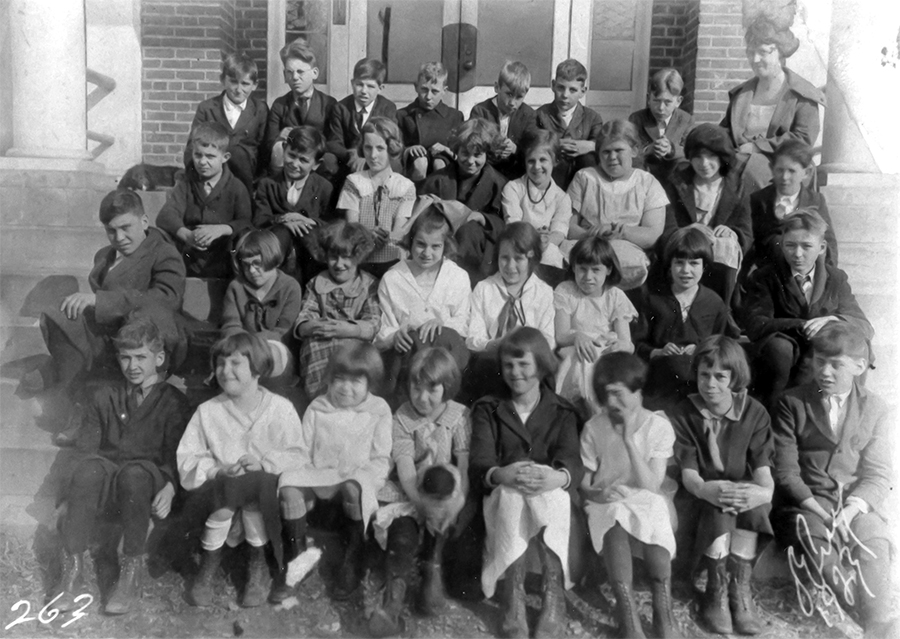
School Days
During the 1930s, the typical elementary school day began at 9:00 a.m. and ended at 3:20 p.m. School bus service was provided to children who lived outside of walking distance, however the poor condition of the dirt roads in the rural countryside surrounding Forestville led to several instances where the school buses were delayed because their tires had become mired in thick mud and clay. When roads became particularly bad, school bus drivers would hire and operate horse-drawn wagons with open tops. During bitterly cold weather the brakes on the school bus would sometimes freeze; however, Forestville bus driver Homer Presgrave told the School Board in 1935 that, “being frozen proved no hazard since brakes were not needed because the mud was so deep.”
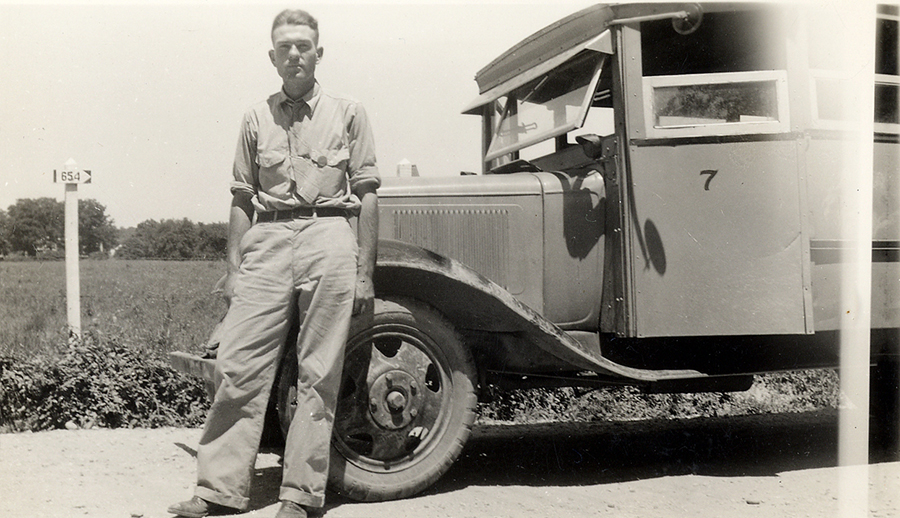
During the 1939-40 school year, Homer Presgrave’s salary as school bus driver was $35 per month, and Forestville custodian G. R. McCutchan’s salary was $45 per month. The five teachers at Forestville (Mildred Dodson, Mary Money, Gertrude Oliver, Elizabeth Read, and Elizabeth Thomas) earned between $760 and $1,000 annually, and Principal / Teacher E. P. Orr’s annual salary was $1,200.
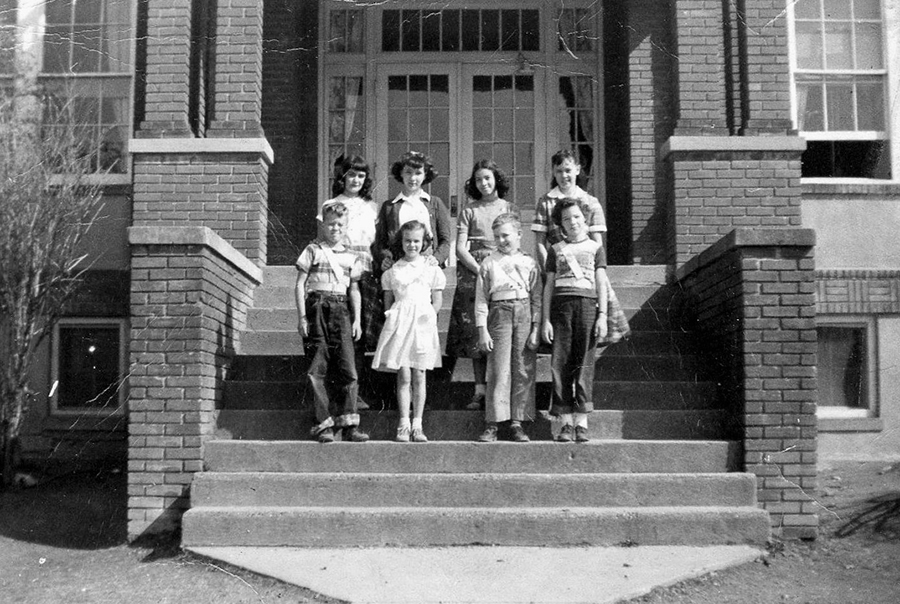
Forestville Elementary School had an active Student Council Association (SCA), Safety Patrol, Glee Club, and 4-H Club. The children eagerly anticipated annual celebrations of Halloween, Christmas, and May Day.
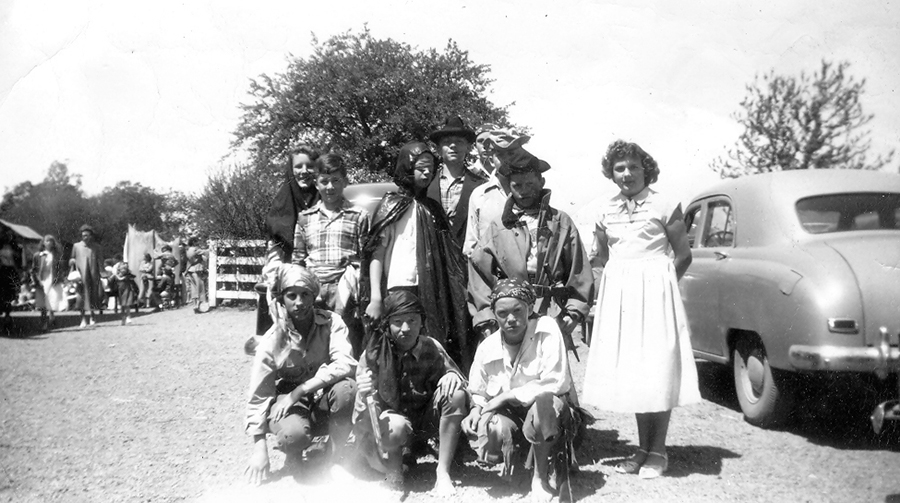
The 1940s
Enrollment at Forestville Elementary School swelled from 155 pupils in September 1937 to 185 pupils in September 1940, an upward trend that would continue throughout the next decade. During World War II, several improvements were made to the school such as the installation of electrical lighting in first floor classrooms, the construction of an entrance to the basement from the outside of the building, and the installation of a ceiling over the lunch room in the basement. In 1944, the Forestville Fire Department constructed a cistern on the school grounds to supply water for firefighting in the vicinity of the school and for the protection of the school itself.
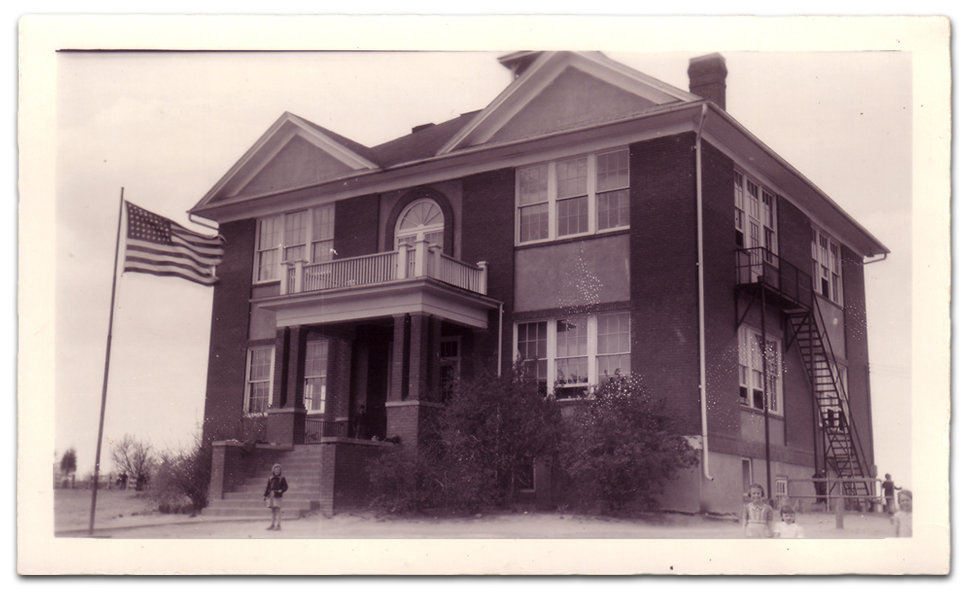
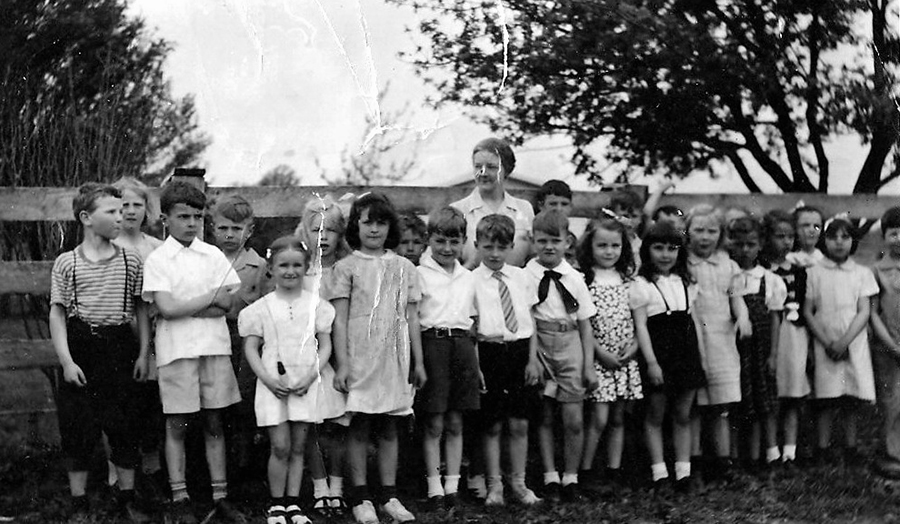
The Baby Boom Begins
Following World War II, rapid growth of the Federal government brought an influx of workers and returning veterans to Northern Virginia. In June 1945 there were 8,235 children enrolled in FCPS at 42 schools. By June 1949 enrollment had increased to 12,118 children, but there were still only 42 schools in operation. Overcrowding was becoming a serious concern at Forestville Elementary School, necessitating the partitioning of the auditorium to create additional classroom space.
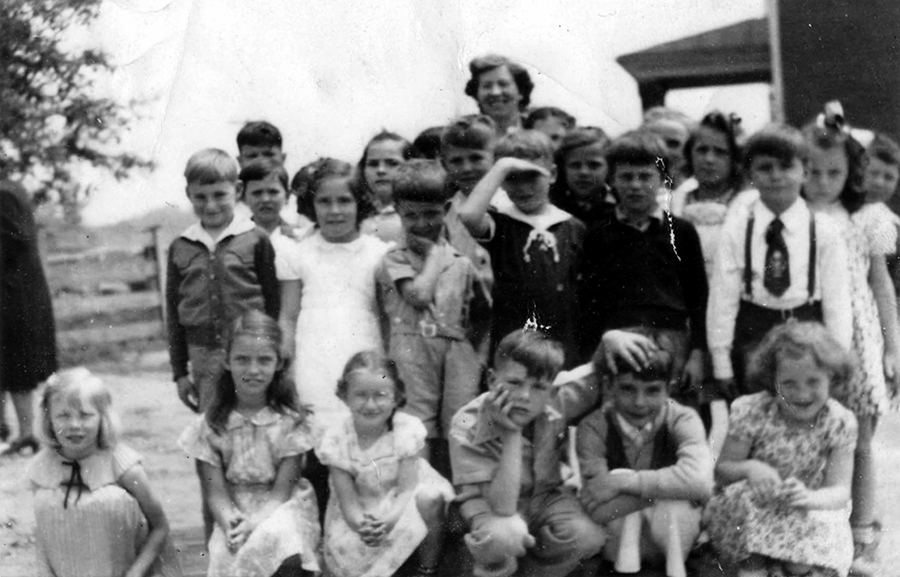
FCPS Superintendent W. T. Woodson advocated for the sale of voter-approved school bonds as a source of potential revenue for school construction. However, bond referendums met with limited success at the ballot box because record-setting suburban growth was primarily taking place in eastern Fairfax County and voters in unaffected communities were unconvinced of the need for additional funding.
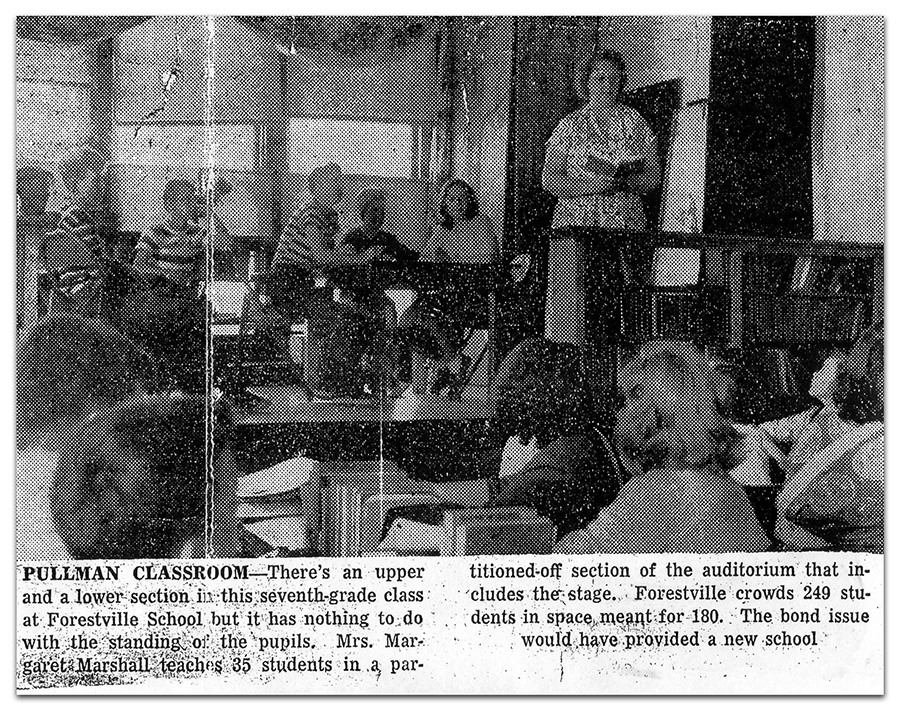
As early as 1948, FCPS administrators formulated plans to build a new school at Forestville to relieve overcrowding, but progress was hampered by a lack of funding. In September 1950, Principal Gertrude Oliver was granted permission to remove the stage in the auditorium in order to make more space available for the two classes being conducted in that space. One year later, FCPS entered into a rental agreement with Forestville Methodist Church to use part of the church for classroom space at a rate of $30 per month.
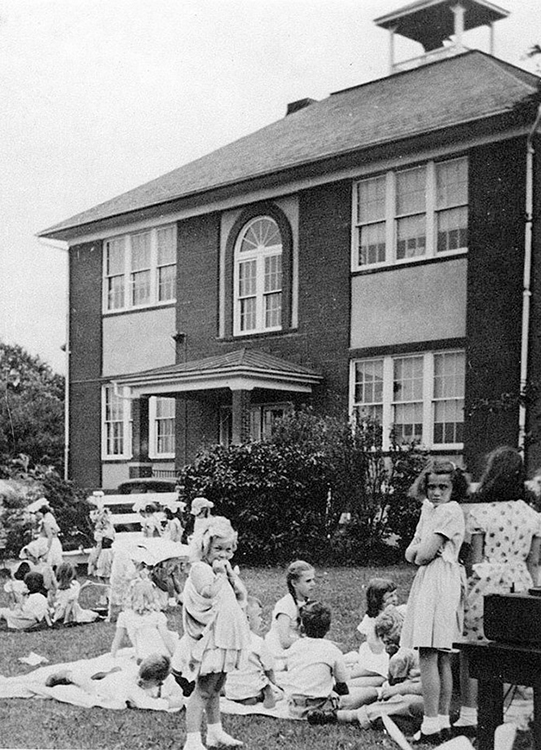
“We’re Moving at Last!”
On April 1, 1952, the Fairfax County School Board awarded the contract for the construction of a new elementary school at Forestville to the Howard-Mitchell Construction Company of Richmond, Virginia, in the amount of $280,012. The building, consisting of ten classrooms and a cafetorium, was designed by architect Robert A. Willgoos of Alexandria, Virginia. The 1952-53 school year began with 20,260 students enrolled in FCPS, an increase of more than 2,000 from the previous year. Forestville Elementary School was significantly overcrowded, so the Forestville Grange permitted FCPS to use the old two-room Forestville schoolhouse rent free to house two classes of students with the understanding that the School Board would pay for heat, lights, and water. It was initially hoped the new school on Walker Road would be ready by late December, but a scarcity of construction materials such as steel, brick, and glass, combined with poor weather, delayed completion of the building until springtime.
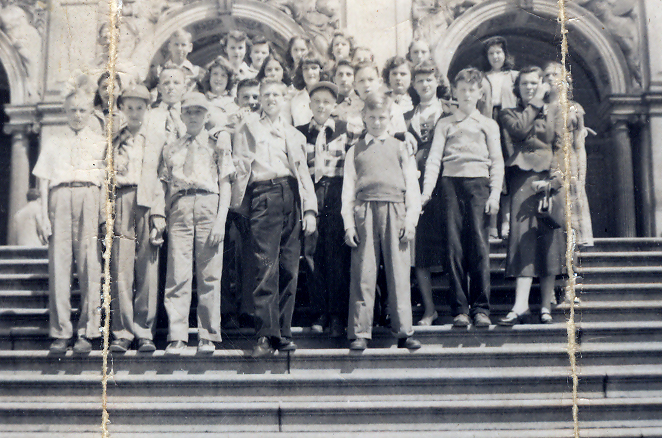
At the end of the 1952-53 school year, Forestville's SCA published a 7th Grade Annual—a retrospective literary work documenting the history of the school year. The annual was comprised of student-written stories, poetry, general interest articles, and student artwork.
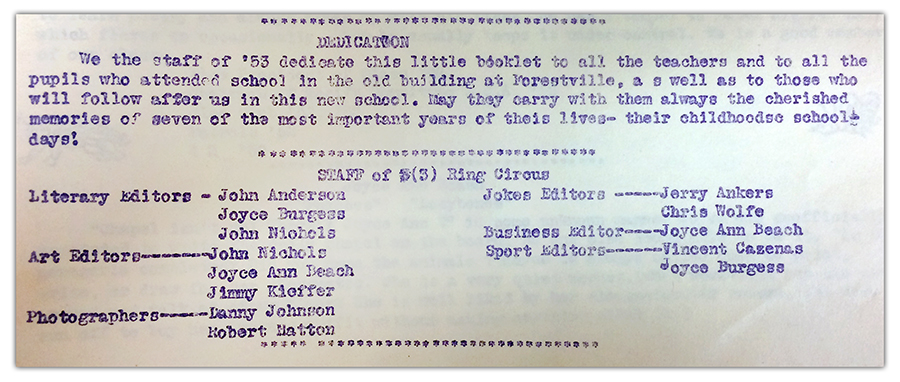
In 1993, a copy of this annual was donated to Great Falls Elementary School by John Anderson, one of the annual’s editors who also served as the SCA President in 1952-53. Pictured below is the cover Anderson created for his copy of the annual.
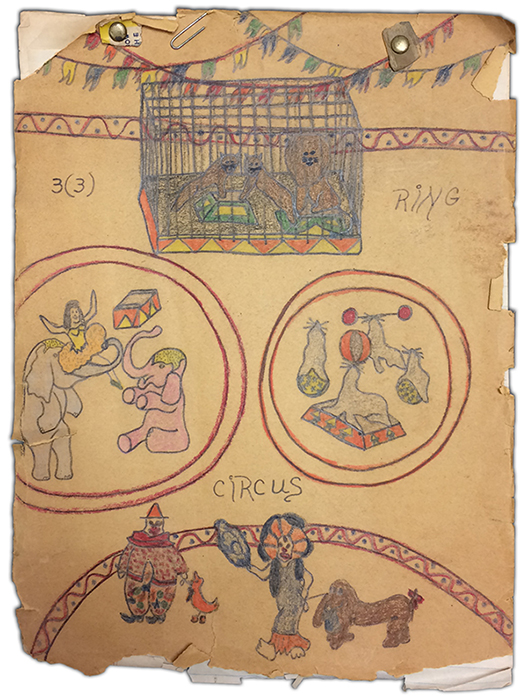
In addition to descriptions of SCA activities, Glee Club performances, and 4-H Club awards, the seventh graders described opening day at the new Forestville Elementary School.
We’re moving at last! We had planned to go (1) Christmas, (2) mid-term, (3) Valentine’s Day, (4) Easter, and finally made it on May Day. During this week, we had sent ahead our extra books and room possessions. The movers arrived about ten in the morning with three trucks. At ten till twelve, we, the seventh graders, were the last to abandon the old school building. There we had spent the past seven years of our life. Mr. Presgraves took us over in the bus. We left eleven of our old desks, and when we arrived at the new building, we found no new desks. We deposited the flag, flowers, pictures, pencil sharpener, etc. We were permitted to go into the most attractive library and select one of the new books on the shelves. A thunder shower came up at recess, so we had to stay inside. One of the glass bricks in the front of our room leaked. We washed the new blackboards five or six times. One of our patrons, Mrs. Murphy, sent a lovely potted geranium to each room. The buses came – we left – happy and determined to love and cherish our New School!
~ Joyce Burgess
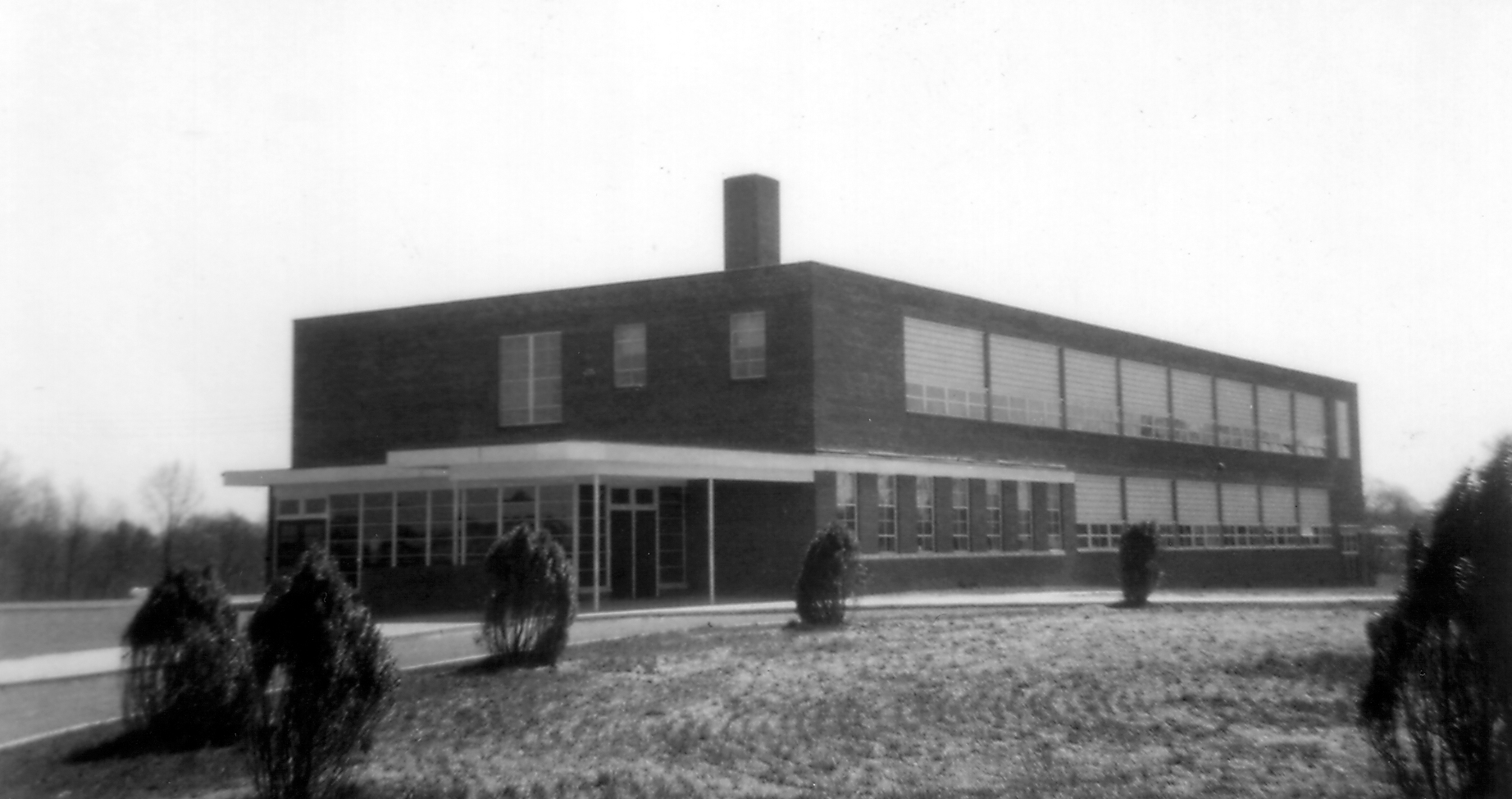
Carolyn Cornwell Miller, who graciously provided us with many photographs of the old schools of Forestville, was one of the seventh graders who moved to the new building on May 1, 1953. In 2018, she shared some of her memories of the old Forestville Elementary School:
The Forestville School building was a brick building with two floors and basement. The front door was not used, because they had put an office at the front entrance with another wall of glass and door out into the hall. There were four classrooms on the first floor. The hall had dark trim with dark wood paneling half way up the walls. The stairs were also dark wood. The second floor had two classrooms on either side of the hallway which opened to an auditorium with a stage. The auditorium was in the front of the building. In later years they divided the auditorium into two classrooms. The fifth grade was in the back side and the seventh was in the front side with the stage. There was a fire escape on the back side of the auditorium. The basement had restrooms, a kitchen, and a dining area. There was a door on the right side of the basement to the outside. The last year at the school, Nellie Woods and Ida Gray were the cooks. The seventh grade class voted on the last meal they wanted to be served. It was vegetable soup and peanut butter and jelly sandwiches.
~ Carolyn Miller
Serving the Community
In April 1957, representatives from the Great Falls Volunteer Fire Department spoke at a meeting of the Fairfax County School Board. The representatives described the department’s need for larger facilities in order to better serve the community, and cited how well they felt the old Forestville School property could fulfill that need. They also stated that the department wanted to raze the existing building and construct a new fire station on the site. The School Board sold the property to the Great Falls Fire Department two years later, on May 19, 1959.
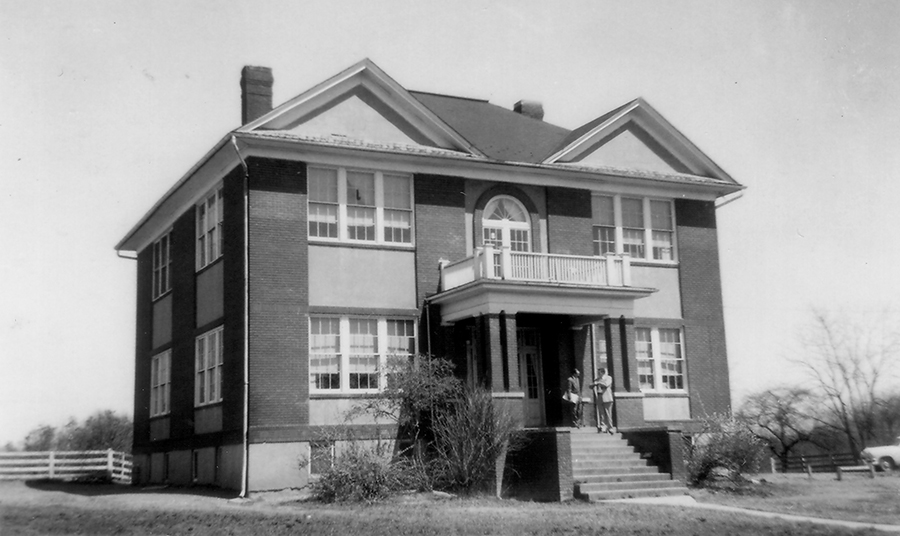
For Whom the Bell Tolls
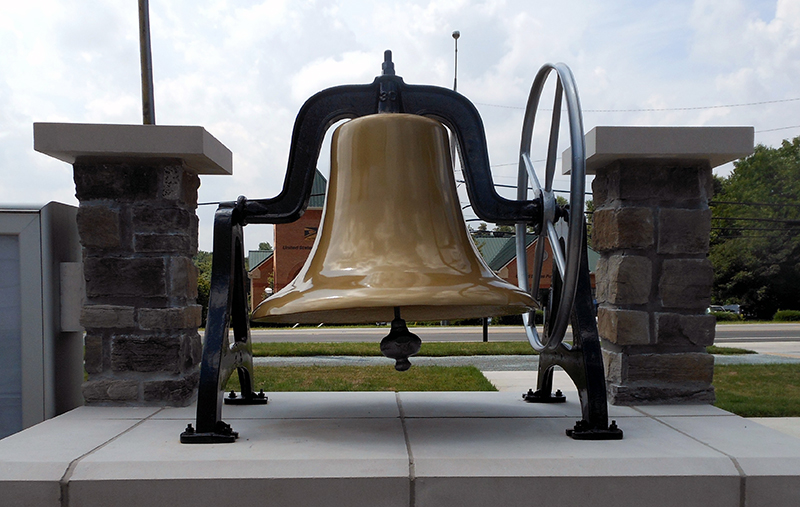
Pictured above is the bell that sits in front of the Great Falls Fire Station. In 1889, this bell was installed above the Forestville one-room schoolhouse. In 1922, the bell was removed and placed atop the new Forestville High School building. By the late 1940s, the bell was beginning to cause damage to the roof of the school. It was removed about 1949 and given to Alice Cornwell, widow of George Gunnell, the couple that had donated the land for the Forestville School in 1889. Ms. Cornwell gave the bell to Mr. E. P. Orr, a former principal and teacher at Forestville Elementary School. When Mr. Orr fell into ill health, he donated the bell to the Great Falls Volunteer Fire Department.
The Principals of the old Forestville High / Elementary School
1923-25: Frederick Bruce Cunningham
1926-27: R. Watson Durham
1927-28: John E. Quintrell
1928-29: Clayton Scyphers
1929-30: J. D. Hardy
1930-32: Edith Rogers
1932-33: G. Claude Cox
1933-40: E. P. Orr
1940-42: Harry W. McCary
1942-46: Elsie Haynie
1946-47: Janie G. Nance
1947-53: Gertrude Frances Chesley Oliver

